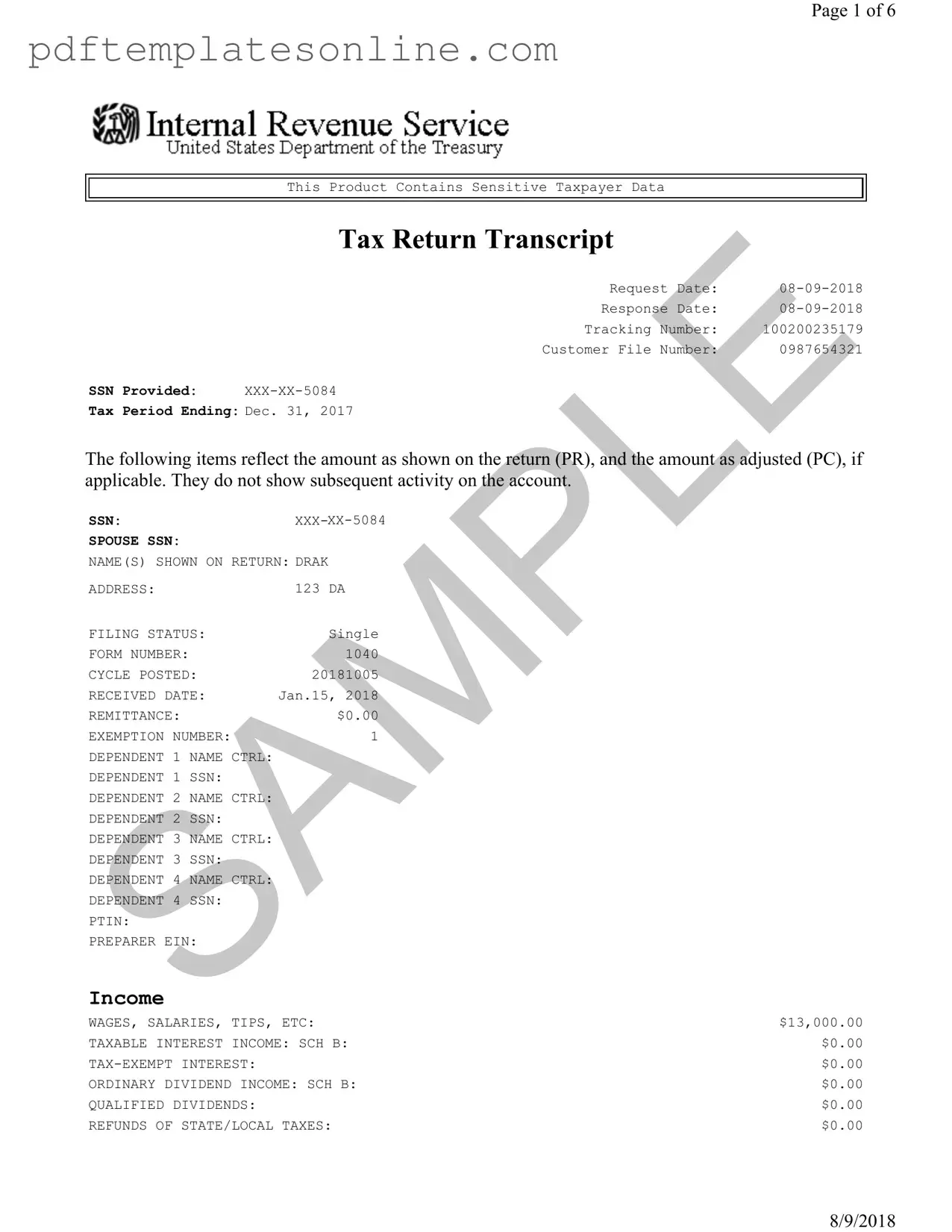Filling out the Sample Tax Return Transcript form can be a straightforward process, but there are common mistakes that individuals often make. These errors can lead to delays or complications in processing. Understanding these pitfalls can help ensure a smoother experience.
One frequent mistake is incorrectly entering personal information. This includes the Social Security Number (SSN) and names. Even a small typo can cause significant issues. Always double-check this information to ensure it matches the official documents.
Another common error involves misreporting income. Taxpayers sometimes forget to include all sources of income or misclassify them. For example, business income from a side hustle should be reported accurately. It's essential to gather all relevant documents before filling out the form.
Many people also overlook the importance of tax credits and deductions. Missing out on credits can lead to a higher tax liability. For instance, if you qualify for the Earned Income Credit, ensure it is included. Review eligibility requirements to maximize your benefits.
Additionally, failing to sign the form is a common oversight. A signature is necessary for the submission to be valid. Without it, the form may be rejected or delayed. Always remember to sign and date the document before sending it in.
Another mistake involves not keeping copies of submitted forms. Having a record of what was submitted can be invaluable if questions arise later. It’s a good practice to maintain copies for personal records.
Some individuals also make the mistake of not using the latest version of the form. Tax forms can change from year to year, and using an outdated version may result in errors. Always check for the most current form before starting.
Another pitfall is ignoring deadlines. Late submissions can incur penalties and interest. Mark important dates on your calendar to ensure timely filing. Being proactive can save you from unnecessary stress.
Finally, not seeking help when needed can lead to mistakes. If you’re unsure about certain entries or calculations, consider consulting a tax professional. They can provide guidance and help avoid costly errors.
By being aware of these common mistakes, individuals can fill out the Sample Tax Return Transcript form more accurately and efficiently. Taking the time to review and double-check information can make a significant difference in the overall experience.
